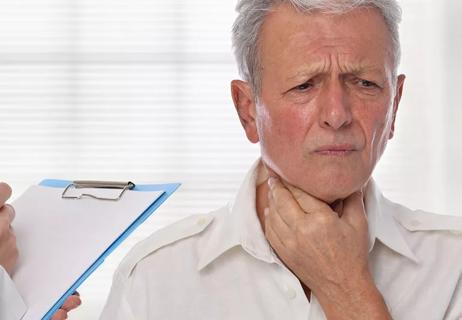Understanding Cancer Spread to Lymph Nodes: Early Detection and Treatment Options
When diagnosed with cancer, a primary concern is whether it has spread to the lymph nodes. But what does cancer in your lymph nodes really mean? How does it impact your prognosis and treatment plan? This article explores the role of lymph nodes in cancer progression, detection methods, and available treatment strategies.
What Does It Signify When Cancer Spreads to Lymph Nodes?
Cancer cells in lymph nodes often indicate that the primary cancer is spreading beyond its original site. According to Dr. Shimoli Barot, a hematologist oncologist, this spread signifies that cancer cells have found favorable conditions to grow elsewhere in the body. Understanding this process is crucial for effective cancer management. Key takeaways:
- Primary vs. Secondary Cancer: Cancer originating in lymph nodes is primary (like lymphoma), while spread from another site makes it secondary.
- Implication of Spread: Detection of cancer cells indicates potential spread to other areas.
The Lymphatic System: How Cancer Spreads
Your lymphatic system is a crucial part of the immune system that protects against disease and infection. The system circulates lymph fluid through lymph nodes, which act as filters, trapping and destroying harmful invaders such as bacteria and viruses. However, cancer cells can exploit this system for their spread. How cancer spreads through the lymphatic system:
- Lymphatic System's Role: It circulates lymph fluid, filtering out harmful invaders via lymph nodes.
- Cancer's Exploitation: Cancer cells break off from the original tumor and travel to nearby lymph nodes.
- Distant Spread: Cancer can spread through the bloodstream and lymphatic system to distant lymph nodes and organs.
Detecting Cancer Spread: Recognizing Symptoms and Diagnostic Tools
Early detection of cancer spread is crucial for effective treatment. While some individuals may experience noticeable symptoms, others might not feel anything at all. Methods for detecting cancer spread includes:
- Swelling: Noticeable in nodes closer to the surface (neck, armpit, groin).
- Pain or Pressure: Occurs if deeper lymph nodes press on nearby organs or tissues.
If there are just a few cancer cells in your lymph nodes, you may not feel anything. Therefore, your provider may use the following diagnostic tools:
- Imaging: CT scans, MRIs, PET scans, and lymphoscintigraphy identify the sentinel lymph node.
- Biopsy: Removing lymph nodes (excision) or sampling fluid/cells via needle.
What Happens After a Cancer Diagnosis?
Following the detection of cancer spread to the lymph nodes, several steps may be taken:
- Additional Testing: Determining the extent of cancer spread.
- Lymph Node Removal: Eliminating cancer cells.
- Systemic Treatment: Targeting cancer cells throughout the body.
The goal is to contain, remove, or destroy cancer cells before they spread further. The treatment approach varies based on the extent of the spread.
Managing Cancer Spread: Treatment Approaches and Considerations
The approach to treating cancer that has spread to the lymph nodes differs from localized cancer. For instance, breast cancer spreading to chest or abdomen lymph nodes requires a different approach than cancer isolated to the breast or nearby lymph nodes. Treatment strategies include:
- Localized Cancer: Surgery, radiation, and/or local therapies.
- Advanced Cancer: Systemic therapies such as chemotherapy, hormone therapy, or immunotherapy.
No matter where cancer spreads, it remains classified by its origin. For example, even if breast cancer cells are found in lymph nodes outside the breast, it is still classified as breast cancer.
Understanding the Effects of Lymph Node Removal on Cancer Treatment
Removing affected lymph nodes is often necessary, but can lead to lymphedema, a condition that causes swelling due to lymph fluid build-up. The risk increases with the number of lymph nodes removed. Key considerations:
- Lymphedema Risk: Higher with more lymph nodes removed, leading to swelling.
- Immune Function: The body compensates for missing lymph nodes; the main concern is lymphedema management.
When to Seek Medical Advice for Swollen Lymph Nodes
Swollen lymph nodes are common, often indicating the body's response to infection, inflammation, or vaccination. But when should you worry? It's time to consult a healthcare provider if:
- Swelling persists beyond two weeks.
- Swelling occurs for no apparent reason.
- It’s accompanied by new or worsening symptoms.
Conclusion: Proactive Monitoring and Early Intervention
Understanding how cancer spreads to lymph nodes empowers you to take proactive steps in monitoring your health. Consult your healthcare provider about any concerning symptoms, ensuring timely intervention and comprehensive cancer care. Regular check-ups and awareness can significantly improve outcomes in the fight against cancer.














